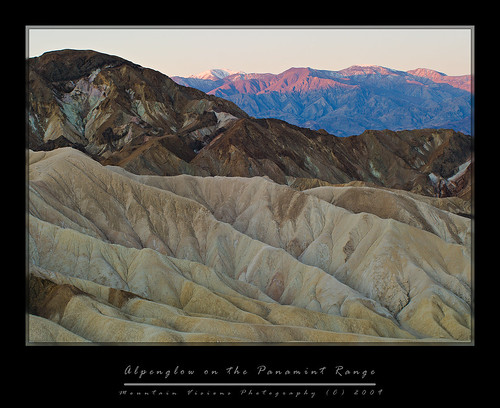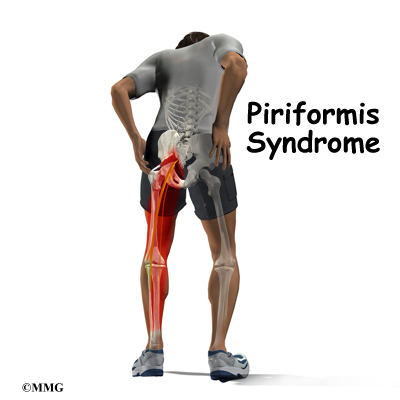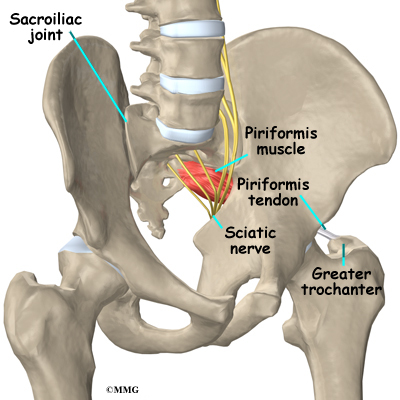
(a continuation of my DEVA series of images and trip reports)
Death Valley is far more than a hole in the ground, and I honestly didn't even see Badwater Basin in my 2 days there, nor was I upset. I did in fact have some concepts for the basin after sunset including star trails, and moon lighting on the salt flats but the wind was less than cooperative, and plans needed to be adapted.
We were just a short drive from the basin on the first day, but Devils Golf Course was much more interesting to me than the flats of the basin. Fear not, I was about -150ft below sea level so I can at least say I was lower than most places on earth ;-).
This shot is an example of forgoing sleep to get the shot. Neither of us got any sleep the night before we flew out and after shooting star trails in the canyon below here till almost midnight, then eating dinner, and getting just a few hours sleep we were back up by 5am. We were done here by 7:30am, and in the real world, one with trees and shade, we could have gone back to our tents and slept for a few hours. Unfortunately, while Death Valley isn't just a hole in the ground, it is sparsely forested, and shade is a rare commodity. So we'd just have to get by on less sleep to come home with a few good shots.
In the end it was worth it. The point this photograph was shot at was devoid of any texture within half an hour of sunrise, yet our pre sunrise arrival yielded what is a phenomenon known as alpenglow that only occurs prior to the sunrise, and is actually not light directly hitting the peaks but rather reflecting onto them.
The colors and textures of Death Valley immediately disappear upon the rise of the sun, and any chance of a meaningful photograph go with it. Within seconds of the sun rising in this shot all the color was gone on the mountains, and I was left with a cold hazy background that even the warmest of warming filters wouldn't have improved.
While the snow might not be there later in the year, I have a feeling this point, Zabriske Point, which towers above Golden Canyon, is actually a better spot later in the spring or summer. The reason of course is the first rays of sun should rise on the foreground as well as hit the Panamint Range in the background. However, the azimuth of the sunrise in March is such that the sun didn't hit this area till it was fairly high in the sky, yielding too much contrast for good photography if you were including the background mountain range across the valley.
So in the end it's a trade off, the contrast of alpenglow on snow, or a more dramatically lit foreground. Which ever you choose, this is another reason to not visit DEVA during the summer months. The days are long, and the chance to photograph is short. You'll most likely get better images in winter and early spring just because of the fewer daylight hours and lower sun angle. Of course the flowers, and snow capped mountains don't hurt either.
Monday, April 27, 2009
Sleep Deprivation In Death Valley
Posted by
Justin Serpico
at
Monday, April 27, 2009
0
comments
![]()
Technorati: California, camping, climbing, Death Valley, Golden Canyon, hiking, Mountain Visions, Panamint Range, Pentax K20D, Pentax Limited, photography, sunrise, Telescope Peak, Zabriske Point
Saturday, April 25, 2009
Ending Midwestern Eco-terror On The Adirondacks
Acid rain is all too real in the Adirondacks which are not known for their deep soil, or the ability to absorb pollutants. The soil in the Adirondacks is notorious for being thin and lacking nutrients. The Algonquins were called bark eaters because of the inability to farm in the Adirondacks. Anyone who doubts the depth of Adirondack soil on the mountain sides only needs to look at the mountain faces that frequently give way to landslides after heavy rainfall. Heavy rain causes a rather positive recreational phenomenon known as a "slide." These slides after a few years offer unobstructed views, technical climbing, and in winter incredible backcountry skiing. Of course this is perhaps the only positive of having thin soil in a world filled with pollution.
Full article can be found here.
Central New York Rep. John McHugh takes aim at acid rain
by Mark Weiner / The Post-Standard
Thursday April 23, 2009, 6:27 AMWashington -- A Central New York congressman, seeing an opportunity that may never come again, has introduced a bill requiring the most drastic cuts in U.S. history to the pollution responsible for acid rain.
Rep. John McHugh said he wants to tie his "Acid Rain and Mercury Control Act" into a landmark energy and climate change bill that Congress will begin considering this week, with the goal of a vote by June.
The climate legislation to control greenhouse gases received a boost last week when the U.S. Environmental Protection Agency ruled that global warming is a danger to public health and welfare.
The EPA's action sets the stage for the federal government to regulate carbon dioxide pollution and five other greenhouse gases linked to climate change.
New York's Adirondack and Catskill mountains are particularly hard hit because their soils are more sensitive to acid rain than any other place in the nation.
Studies have shown that about 40 percent of Adirondack lakes are either always or sometimes acidic. Up to 25 percent of the lakes surveyed have been declared essentially dead, supporting no fish life.
To address the problem, the McHugh bill would:
• Require power plants to make a 90 percent reduction in mercury emissions from current levels by 2013.
• Require a 75 percent cut in sulfur and nitrogen emissions from 1997 levels by 2012.
• Authorize $13.6 million per year through fiscal year 2018 to implement the requirements of the legislation.
• Allow power plant owners to use market-oriented mechanisms to comply with the new standards, such as trading in pollution credits.
• Prohibit any trading of mercury pollution credits, placing an unmovable limit on mercury emissions from individual power plants.
The congressman's proposal received immediate praise from New York state environmental groups and independent scientists who study acid rain."I think this is as aggressive a proposal as I have ever seen," said Syracuse University professor Charles Driscoll, one of the nation's leading acid rain scientists.
Driscoll said the timing of the proposed federal legislation on both climate change and acid rain is important because recent studies show that under higher temperatures soils are less able to retain nitrogen, which leaches into water as nitric acid.
"I think there is some urgency," Driscoll said. "It looks like there are some interactions to climate and acid rain.
The Adirondack Council, the largest advocacy group for the 6 million-acre Adirondack Park, agrees with McHugh that momentum could be strong enough in Congress to finally pass acid rain legislation.
John Sheehan, speaking for the Adirondack Council, said the prospects changed when President Obama took office and expressed his commitment to climate change legislation."I am most interested in ensuring that, however these issues go forward, that acid rain is part of the discussion," McHugh said. "The bill is intended as a reference tool, so if somebody asks what we should be doing, we have a bill that has already been printed up and is ready to go."
Posted by
Justin Serpico
at
Saturday, April 25, 2009
0
comments
![]()
Technorati: acid rain, Adirondack Council, Adirondacks, clean air, coal power, EPA, fish, global climate change, lakes, mercury, midwest, New York, nitrogen, pollution, sulfur, wilderness conservation
Saratoga Battlefield

Anytime I'm on the disabled list I take an opportunity to visit some places that might be a little too tame for me during the rest of the year. Usually I feel like I am wasting a weekend if I do this stuff when I'm at 100%. This trip it was the Saratoga National Historic Park. Despite the proximity to where we've been living for the last 2.5 years, and where I work twice a month, I haven't made the trip up there.
I figured with the injury a little easy walking would be good for me, and it was. I actually felt much better after we walked around. We ended up walking about 4 miles, and while it wasn't particular pretty out since it's still early in the spring, I definitely got some late spring, summer and fall concept shots in mind.
The above shot should be ideal with the leaves on the tree, and foreground flowers on the hillside below the cannon. Of course it could work on a fall day when the leaves change, then again the red cannon and house could work well in winter too.
The battlefield was both historically interesting and photogenically scenic and there is definitely enough to explore at another time!
Before May 1st the admission is free, and after that it's $5 per car, or $10 for the year. There are a few ways to "sneak" into the park, but technically hikers are supposed to pay $3 as well. I'd say considering the paved road tour (which has a pedestrian shoulder) is 8+ miles, and there are at least that many more hiking trail miles getting the $10 pass is probably a good value.
Thursday, April 16, 2009
Two Painful Words...Piriformis Syndrome
It never ceases to amaze me how I never get sick (thankfully, because I'm not good at being sick as my wife will attest), but manage to get just about every orthopedic injury possible.
After herniating 2 disc in 1993, and having decompressive surgery in 2000, my back has been great save for a few months 2005 where I probably re-herniated the L5 disc. Physical therapy, steroids, and time cleared it up.
I was pretty sure this time I'd re-herniated the S1 disc space, since my symptoms were for the S1 nerve distribution. It's really not uncommon to herniate more discs throughout time even after a surgical discectomy and decompression. Once you rupture the annulus fibrosus it never heals, and aside from a very controversial procedure there is no way to actually repair it. The good news is most subsequent herniations are small, and tend to dessicate over time.
The problem was other than the straight leg raise and pain radiating down the leg into my foot, nothing else fit with nerve root compression, which I had for the better part of 8 years, and know all too well how it feels. At the same time there was definitely something irritating my sciatic nerve. As I was doing my McKenzie exercises I noticed there was no pain during them despite full range of motion in my spine. Eventually I realized this wasn't a herniated disc causing the sciatic nerve pain and associated spasm.
A little research revealed I've added a new problem to my distinguished orthopedic medical history, lets give a big hand to Piriformis Syndrome!
Welcome aboard, I'm sure you'll enjoy being part of the team!

Introduction
Pain in the buttock that radiates down the leg is commonly called sciatica. The most common cause for sciatica is irritation of the spinal nerves in or near the lumbar
spine. Sometimes the nerve irritation is not in the spine but further down the leg. One
possible cause of sciatica is piriformis syndrome. Piriformis syndrome can be
painful, but it is seldom dangerous and rarely leads to the need for surgery. Most people
with this condition can reduce the pain and manage the problem with simple methods, such as physical therapy.
This guide will help you understand
how doctors diagnose the condition
what treatment options are available
Anatomy
What parts of the body are involved?
The lower lumbar spinal nerves leave the spine and join to form the sciatic nerve. The sciatic nerve leaves the pelvis through an opening called the sciatic notch.

The piriformis muscle begins inside the pelvis. It connects to the sacrum, the triangular shaped bone that sits between the pelvic bones at the base of the spine. The connection of the sacrum to the pelvis bones forms the sacroiliac joint. There is one sacroiliac joint on the left and one on the right of the low back. The other end of the piriformis muscle connects by a tendon to the greater trochanter, the bump of bone on the top side of your hip.
The piriformis muscle is one of the external rotators of the hip and leg. This means that as the muscle works, it helps to turn the foot and leg outward. Problems in the
piriformis muscle can cause problems with the sciatic nerve. This is because the sciatic
nerve runs under (and sometimes through) the piriformis muscle on its way out of the
pelvis. The piriformis muscle can squeeze and irritate the sciatic nerve in this area,
leading to the symptoms of sciatica.
Full Article Piriformis Syndrome











